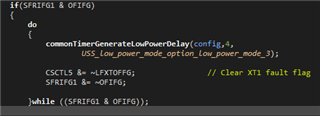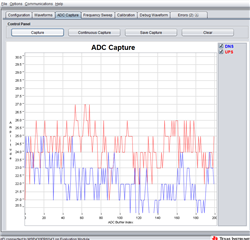Other Parts Discussed in Thread: MSP430FR6043,
Hi,
I am trying to alter the FR6043_USSSWLib_template_example to work with my setup.
Most of the other parts work for me, but I have trouble getting this function to work.
code = USS_configureUltrasonicMeasurement(&gUssSWConfig);
The compiler does not throw an error but when I execute my code, it gets stuck on that routine.
Do you have any suggestions on how I could approach this problem?
Best regards,
Lukas





